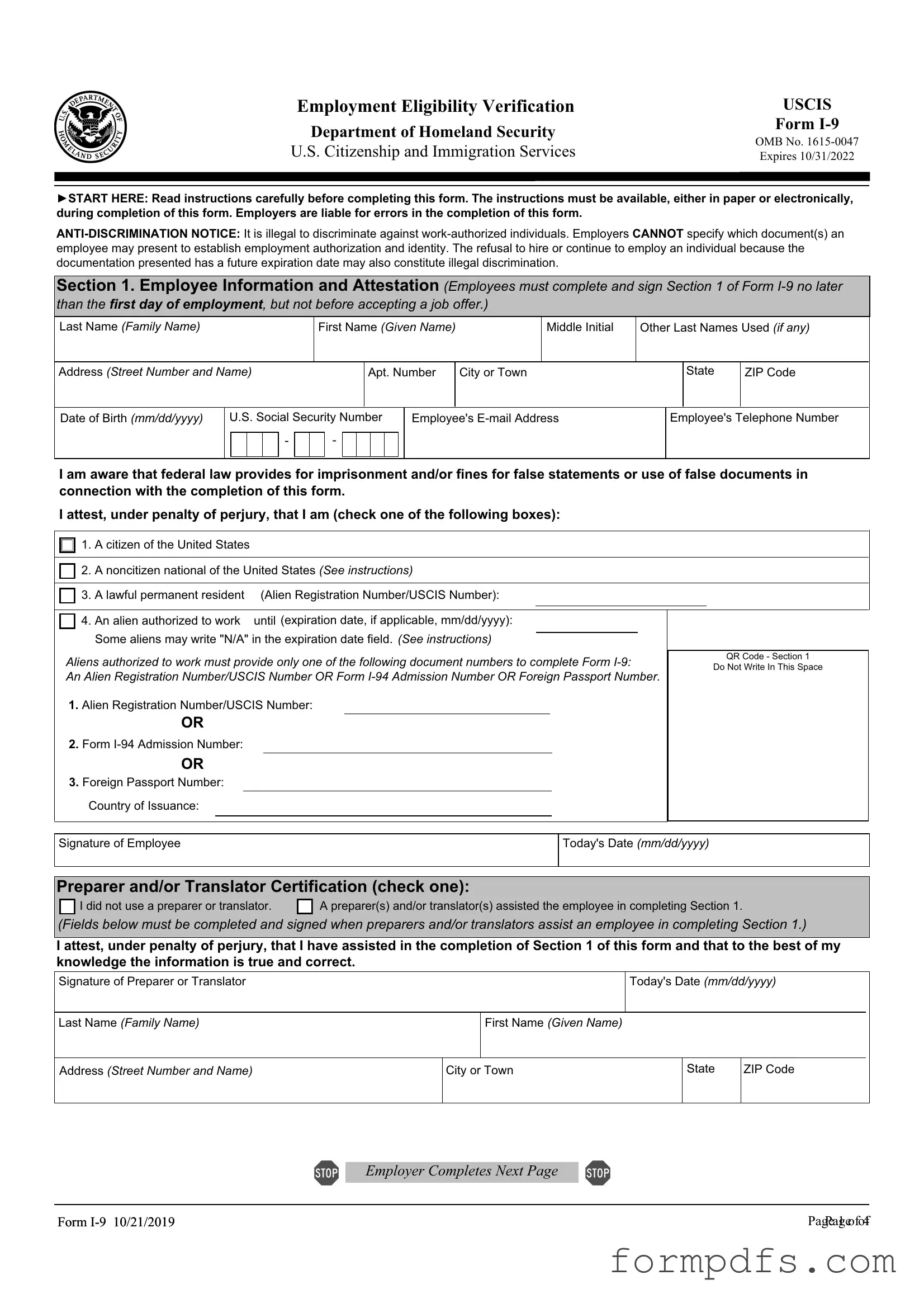What is the USCIS I-9 form?
The USCIS I-9 form, officially known as the Employment Eligibility Verification form, is a document that employers in the United States must complete for every new employee. This form is used to verify the identity and employment authorization of individuals hired for work in the U.S. Both the employer and employee must complete specific sections of the form, ensuring compliance with federal immigration laws. Completing the I-9 is a crucial step in the hiring process, as it helps prevent unauthorized employment.
Who needs to fill out the I-9 form?
Every employer in the United States must require all newly hired employees to complete the I-9 form, regardless of their citizenship status. This includes full-time and part-time employees, as well as those who are temporary or seasonal workers. Employers must also ensure that the form is completed within three days of the employee's start date. Failure to do so can lead to penalties and fines.
What documents are acceptable for the I-9 form?
The I-9 form requires employees to present documents that establish their identity and employment authorization. There are three lists of acceptable documents: List A, List B, and List C. List A includes documents like a U.S. passport or a permanent resident card that prove both identity and employment eligibility. List B includes documents such as a driver’s license that establish identity only, while List C includes documents like a Social Security card that establish employment eligibility. Employees must provide either one document from List A or one from List B and one from List C.
How long do employers need to keep the I-9 form on file?
Employers are required to retain the I-9 form for a specific period. They must keep it for three years after the date of hire or for one year after the employee's termination, whichever is longer. This means that if an employee works for a company for two years and then leaves, the employer must keep the I-9 on file for an additional year. Proper record-keeping is essential to demonstrate compliance with immigration laws during audits or inspections.
What happens if an employer fails to complete the I-9 form?
If an employer fails to complete the I-9 form for an employee, they may face significant consequences. Penalties can range from fines to potential legal action, depending on the severity of the violation. Employers may also be subject to audits by the U.S. Immigration and Customs Enforcement (ICE), which can lead to further scrutiny of their hiring practices. It is crucial for employers to stay compliant to avoid these risks.
Can an employee correct errors on the I-9 form?
Yes, employees can correct errors on the I-9 form. If an employee notices a mistake after the form has been submitted, they should inform their employer as soon as possible. The employer can then make the necessary corrections. It’s important to note that any changes should be initialed and dated by the person making the correction. This helps maintain transparency and accuracy in the employment verification process.
